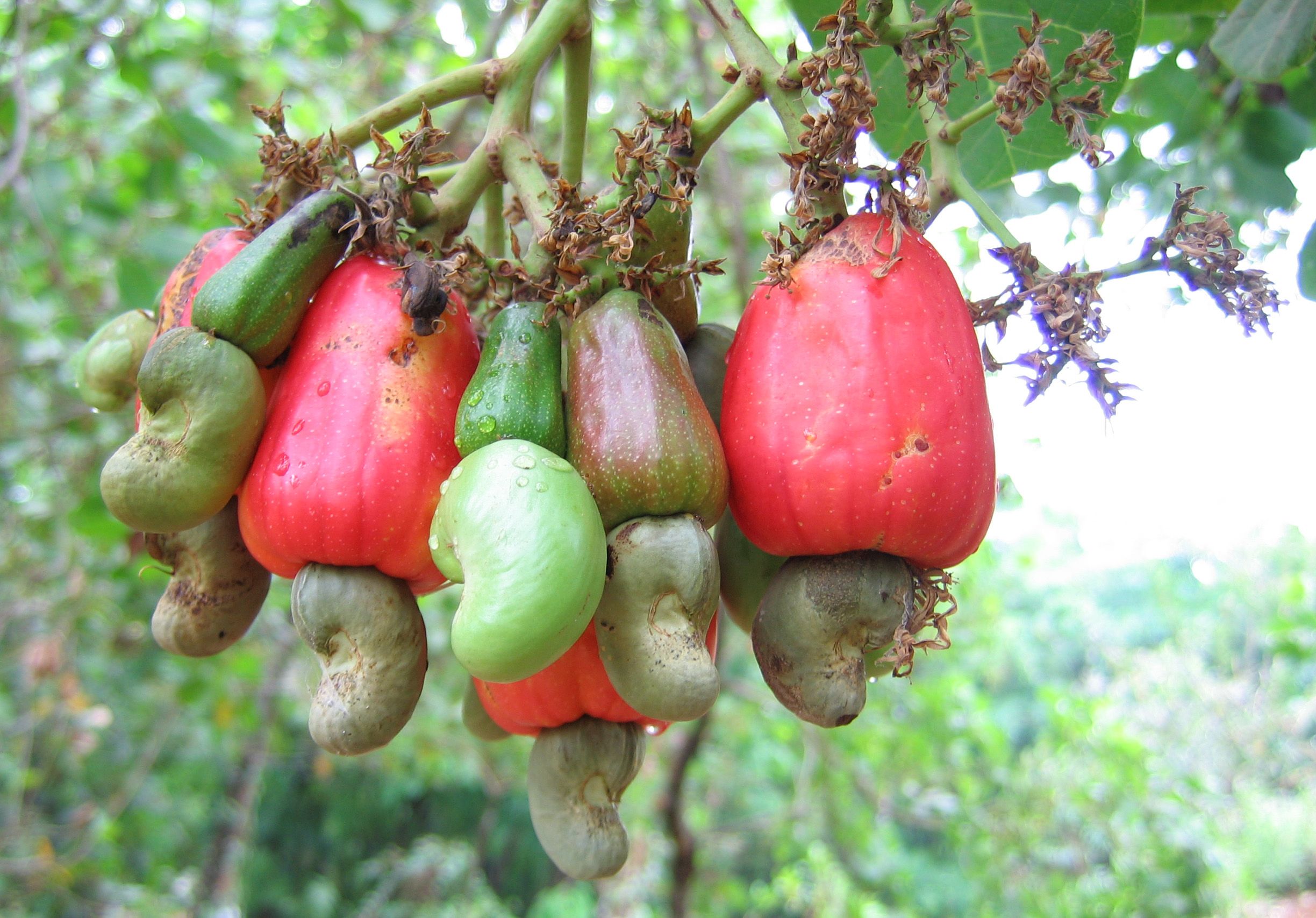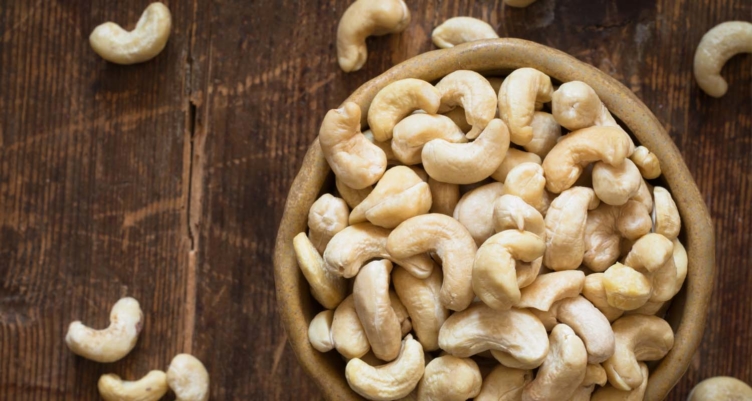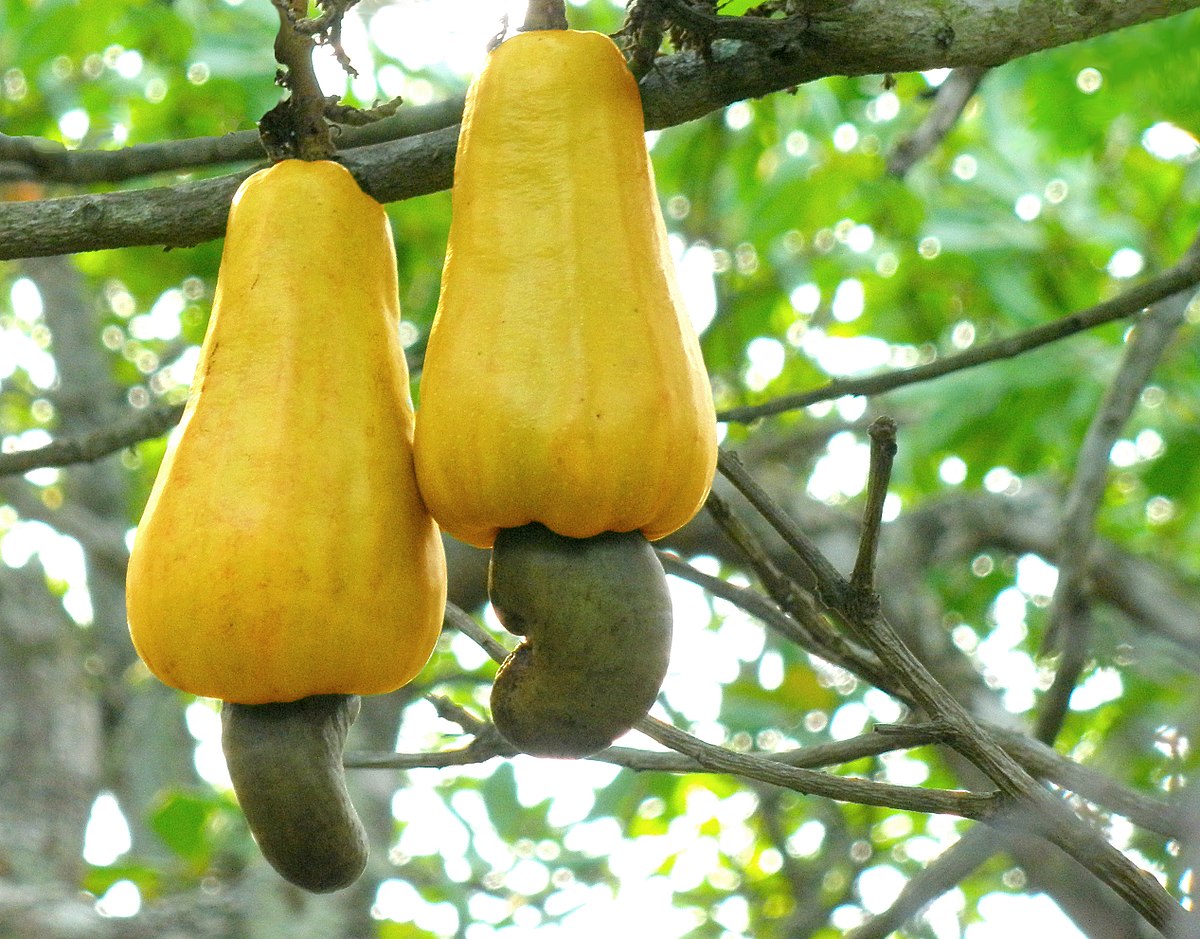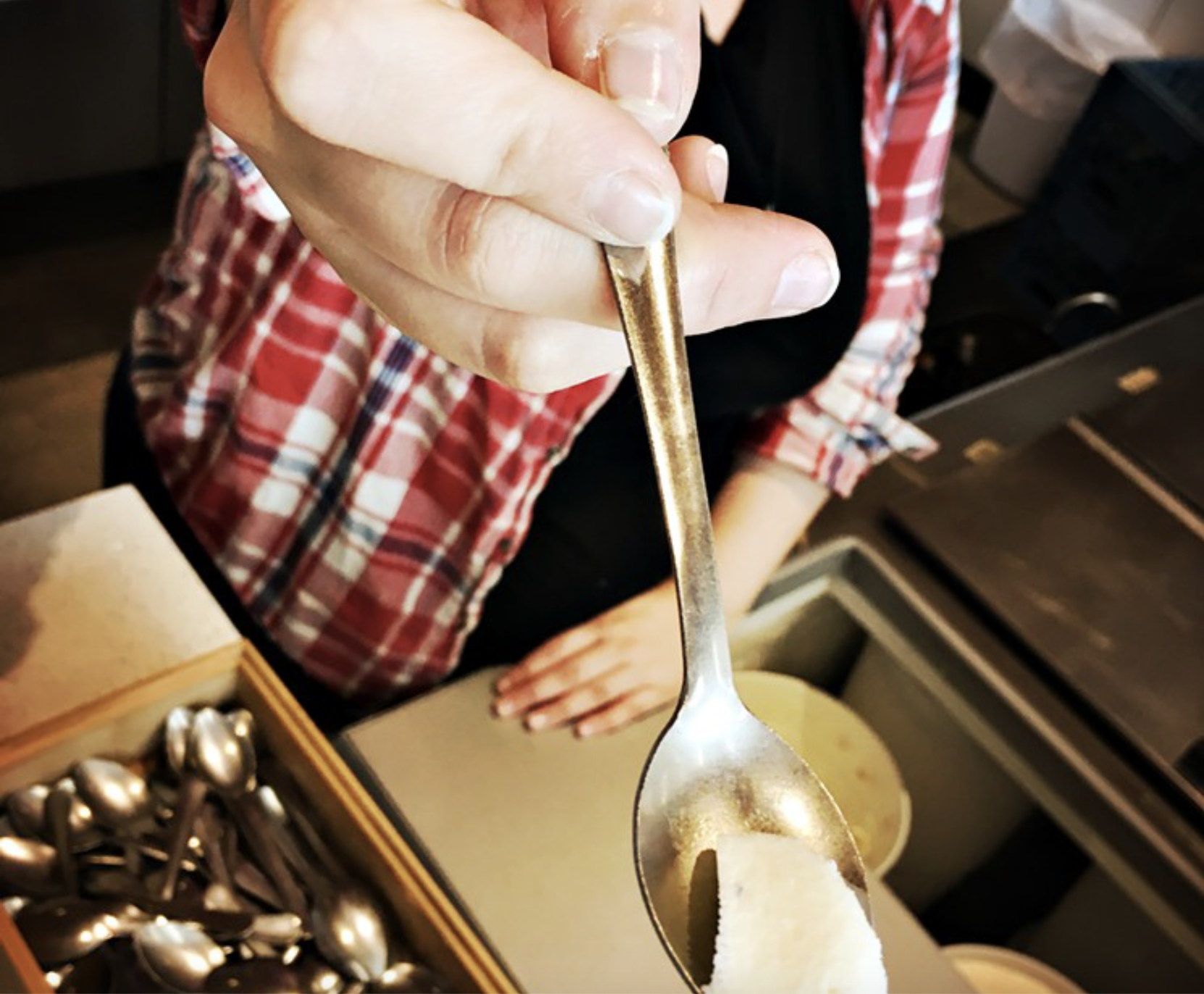
The cashew tree (Anacardium occidentale) is a tropical evergreen tree that produces the cashew seed and the cashew apple. It can grow as high as 14 m (46 ft), but the dwarf cashew, growing up to 6 m (20 ft), has proved more profitable, with earlier maturity and higher yields.
The species is originally native to northeastern Brazil. Portuguese colonists in Brazil began exporting cashew nuts as early as the 1550s. Major production of cashews occurs in Vietnam, Nigeria, India, and Ivory Coast.
The cashew nut, often simply called a cashew, is widely consumed. It is eaten on its own, used in recipes, or processed into cashew cheese or cashew butter. The shell of the cashew seed yields derivatives that can be used in many applications including lubricants, waterproofing, paints, and arms production, starting in World War II. The cashew apple is a light reddish to yellow fruit, whose pulp can be processed into a sweet, astringent fruit drink or distilled into liquor.
Cashews make for an amazing snack that could help reduce your risk of cancer, heart disease, obesity, and diabetes. Research also points to the benefits of cashews on your skin and hair, and even your nerves, due to their powerful micronutrient content. Learn about cashews’ nutritional benefits, and how to select the most healthful nuts.
A single cashew contains about 21 percent protein, 46 percent fat, and 25 percent carbohydrates. A one-quarter cup serving contains about 200 calories, 5 grams of protein, 9 grams of carbs, and 16 grams of fat. Cashews possess a healthy balance of fat types — 62 percent of the cashew’s fats are monounsaturated fat (MUFAs), while 18 percent are polyunsaturated fats (PUFAs). While many nuts possess high levels of polyunsaturated fats (PUFAs), which promote inflammation, cashews have relatively low amounts of PUFAs, which limits the imbalance of omega-6’s to omega-3’s you’re exposed to. Due to these MUFAs and PUFAs, cashew consumption leads to lower risk for a variety of diseases – including cancer, obesity, and heart disease.

What are cashews’ nutritional benefits?
- Protects against cancer: Cashews are brimming with proanthocyanidins, a type of flavanol that starves tumors and prevents cancer cells from dividing.
- Cuts heart disease risk: The oleic acid found in cashews promotes sound cardiovascular health by reducing triglyceride levels, which is associated with heart disease risk.
- Improves bone and joint health: Cashews’ magnesium and copper content work in concert to strengthen bone mass. Most of the magnesium in your body is stored in the bones, so if you’re deficient, your bones will suffer. Copper helps keep bones and joints flexible by synthesizing collagen and elastin.
- Relaxes nerves: Magnesium in cashews prevents calcium from over-activating nerve cells, therefore relaxing them. This action keeps your blood vessels and muscles relaxed as well. (You may notice that if your magnesium levels are low, you often get muscle cramps.)
- Keeps skin and hair healthy: The copper in cashews helps to manufacture various enzymes involved in hemoglobin and collagen formation. Collagen is the main structural protein found in hair and skin that gives it elasticity – so you can think of copper as one of the precursors to your luscious locks.
- Aids in weight loss and maintenance: Cashews contain less fat than other popular nuts including peanuts, pecans, almonds, and walnuts. Yet what makes them a winning “weight loss nut” is that they are nutrient- and energy-dense, and high in fiber, which makes them more filling — a boon for managing weight.
- Prevents diabetes: Most recently, a study found that cashews reduced systolic blood pressure and increased HDL cholesterol concentrations in people with diabetes.




